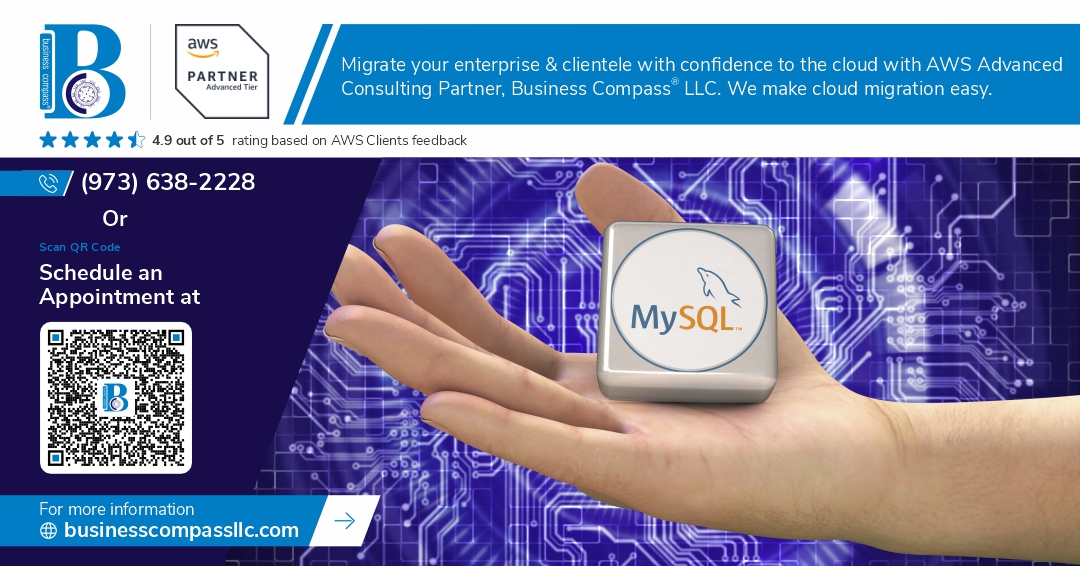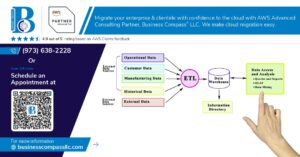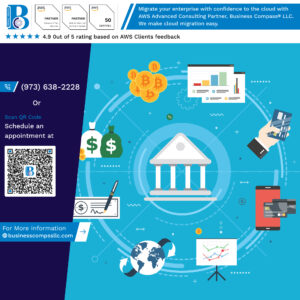Are you drowning in a sea of database options? 🌊💻 In today’s data-driven world, choosing the right relational database management system (RDBMS) can make or break your project’s success. From the open-source darling MySQL to the enterprise-grade Oracle, the landscape is vast and often confusing.
But fear not! We’re here to be your compass in navigating these choppy waters. Whether you’re a startup looking for cost-effective solutions or a large corporation requiring robust features, understanding the nuances between MySQL, Postgres, MS SQL Server, Oracle, DB2, and Sybase is crucial. Each has its strengths, weaknesses, and ideal use cases that could significantly impact your project’s performance, scalability, and bottom line.
In this comprehensive guide, we’ll dive deep into the world of relational databases, comparing and contrasting these six titans of data management. We’ll explore everything from their unique features and performance benchmarks to cost considerations and industry-specific advantages. By the end, you’ll be equipped with the knowledge to make an informed decision that aligns perfectly with your needs. Let’s embark on this journey to database enlightenment! 🚀📊
Overview of Relational Databases
A. Definition and core concepts
Relational databases are structured data management systems that organize information into tables with predefined relationships. These systems use SQL (Structured Query Language) for managing and querying data. The core concepts include:
- Tables: Primary structure for storing data
- Columns: Define attributes of data
- Rows: Represent individual records
- Primary Keys: Unique identifiers for each record
- Foreign Keys: Establish relationships between tables
B. Importance in modern data management
Relational databases play a crucial role in modern data management due to their:
- Data Integrity: Ensures accuracy and consistency
- ACID Compliance: Guarantees reliable transactions
- Scalability: Handles large volumes of data efficiently
- Security: Provides robust access control mechanisms
- Standardization: Uses SQL for widespread compatibility
C. Key features of relational databases
| Feature | Description |
|---|---|
| Normalization | Reduces data redundancy and improves integrity |
| Indexing | Enhances query performance |
| Transactions | Ensures data consistency during multiple operations |
| Views | Provides virtual tables for simplified data access |
| Stored Procedures | Allows reusable code for complex operations |
Relational databases offer powerful features that make them indispensable for various applications:
- Data Relationships: Easily establish and maintain connections between different data entities
- Query Optimization: Efficiently retrieve and manipulate data
- Concurrent Access: Allow multiple users to access data simultaneously
- Backup and Recovery: Provide robust mechanisms for data protection and restoration
Now that we have covered the fundamental aspects of relational databases, let’s explore one of the most popular open-source options: MySQL.
MySQL: The Open-Source Powerhouse
Strengths and use cases
MySQL’s open-source nature and robust feature set make it a popular choice for a wide range of applications. Its key strengths include:
- Easy to use and maintain
- High performance and reliability
- Cross-platform compatibility
- Extensive community support
Common use cases for MySQL include:
- Web applications
- Content management systems
- E-commerce platforms
- Data warehousing
| Strength | Benefit |
|---|---|
| Open-source | Cost-effective, customizable |
| ACID compliant | Ensures data integrity |
| Replication | Improves availability and performance |
| Partitioning | Enhances query performance for large datasets |
Performance characteristics
MySQL excels in read-heavy workloads, making it ideal for web applications. Its performance is optimized through:
- Query caching
- Indexing
- Full-text search capabilities
- Multi-threaded architecture
Scalability options
MySQL offers various scalability solutions:
- Vertical scaling (upgrading hardware)
- Horizontal scaling (replication and sharding)
- Cloud-based deployments
These options allow MySQL to handle growing data volumes and user loads effectively.
Community support and ecosystem
MySQL boasts a vibrant community and extensive ecosystem, including:
- Comprehensive documentation
- Third-party tools and plugins
- Regular updates and security patches
- Active forums and user groups
This strong support network ensures continuous improvement and problem-solving resources for users of all levels.
PostgreSQL: Advanced Features for Complex Data
Unique selling points
PostgreSQL stands out as a powerful open-source relational database management system with several unique features:
- Advanced data types
- Full-text search capabilities
- Multi-version concurrency control (MVCC)
- Geospatial data support
- JSON and JSONB support
These features make PostgreSQL an excellent choice for complex data applications and enterprises requiring robust database solutions.
Data integrity and ACID compliance
PostgreSQL excels in maintaining data integrity through its strict adherence to ACID principles:
| ACID Property | PostgreSQL Implementation |
|---|---|
| Atomicity | Transaction management |
| Consistency | Constraints and triggers |
| Isolation | MVCC |
| Durability | Write-Ahead Logging (WAL) |
This ensures that data remains accurate and consistent, even in high-concurrency environments or during system failures.
Extensibility and custom functions
One of PostgreSQL’s most powerful features is its extensibility. Users can create:
- Custom data types
- Custom functions and stored procedures
- Custom indexing methods
This flexibility allows developers to tailor the database to specific application needs, enhancing performance and functionality.
Handling of unstructured data
PostgreSQL offers robust support for unstructured data:
- Native JSON and JSONB data types
- Full-text search capabilities
- XML support
- Hstore for key-value pair storage
These features make PostgreSQL a versatile choice for applications dealing with diverse data types, from traditional structured data to modern unstructured formats.
Now that we’ve explored PostgreSQL’s advanced features, let’s examine how Microsoft SQL Server caters to enterprise-grade solutions.
Microsoft SQL Server: Enterprise-Grade Solution
Integration with Microsoft ecosystem
Microsoft SQL Server seamlessly integrates with other Microsoft products, creating a powerful ecosystem for businesses. This integration extends to popular tools like:
- Azure cloud services
- Power BI for data visualization
- Visual Studio for development
- SharePoint for collaboration
The tight integration allows for smoother workflows and enhanced productivity across various Microsoft platforms.
Business intelligence capabilities
SQL Server offers robust business intelligence features, empowering organizations to make data-driven decisions. Some key capabilities include:
- SQL Server Analysis Services (SSAS) for OLAP and data mining
- SQL Server Reporting Services (SSRS) for creating interactive reports
- SQL Server Integration Services (SSIS) for ETL processes
These tools enable businesses to extract valuable insights from their data, transforming raw information into actionable intelligence.
Security features
Security is a top priority in SQL Server, providing advanced features to protect sensitive data:
| Feature | Description |
|---|---|
| Always Encrypted | Ensures data remains encrypted at rest and in transit |
| Dynamic Data Masking | Obscures sensitive data for unauthorized users |
| Row-Level Security | Restricts data access based on user characteristics |
| Transparent Data Encryption | Protects data at rest without application changes |
These security measures help organizations comply with data protection regulations and safeguard their valuable information.
Cloud deployment options
SQL Server offers flexible deployment options, including on-premises, cloud, and hybrid configurations. Azure SQL Database, the cloud version of SQL Server, provides:
- Scalability to meet changing demands
- Automatic backups and high availability
- Built-in intelligence for performance optimization
- Geo-replication for disaster recovery
These cloud capabilities enable businesses to leverage the power of SQL Server while benefiting from the agility and cost-effectiveness of cloud computing.
Oracle Database: Robust and Feature-Rich
High availability and disaster recovery
Oracle Database offers robust high availability and disaster recovery solutions, ensuring business continuity in critical environments. Some key features include:
- Real Application Clusters (RAC)
- Data Guard
- Flashback Technology
- Automatic Storage Management (ASM)
Here’s a comparison of Oracle’s high availability features with other databases:
| Feature | Oracle | MySQL | PostgreSQL | SQL Server |
|---|---|---|---|---|
| RAC | Yes | No | No | Yes |
| Data Guard | Yes | No | Yes (Limited) | Yes |
| Flashback | Yes | No | No | No |
| ASM | Yes | No | No | No |
Advanced partitioning techniques
Oracle’s partitioning capabilities allow for efficient management of large datasets:
- Range partitioning
- List partitioning
- Hash partitioning
- Composite partitioning
These techniques improve query performance, data manageability, and availability.
In-memory processing capabilities
Oracle’s In-Memory option accelerates analytics and mixed workload OLTP:
- Dual-format architecture
- In-memory compression
- SIMD vector processing
Enterprise-level support
Oracle provides comprehensive support options:
- 24/7 technical support
- Proactive monitoring and alerts
- Dedicated account management
With these robust features and enterprise-grade support, Oracle Database stands out as a powerful solution for organizations with complex data management needs. Next, we’ll explore IBM DB2, another major player in the enterprise database market.
IBM DB2: Mainframe to Cloud
Cross-platform compatibility
IBM DB2 has evolved from its mainframe roots to become a versatile database system that operates seamlessly across multiple platforms. This cross-platform compatibility ensures that organizations can leverage DB2’s powerful features regardless of their infrastructure choices.
- Supported platforms:
- Linux
- Unix
- Windows
- z/OS (mainframe)
- Cloud environments (IBM Cloud, AWS, Azure)
DB2’s commitment to cross-platform compatibility allows for:
- Easier migration between platforms
- Consistent performance across different environments
- Flexibility in deployment options
AI and machine learning integration
DB2 has embraced the power of AI and machine learning to enhance its capabilities:
| Feature | Description |
|---|---|
| Augmented Data Explorer | AI-powered tool for data discovery and insights |
| Machine Learning Optimizer | Improves query performance using ML algorithms |
| AI-driven index recommendations | Suggests optimal indexes for better performance |
These AI-powered features enable organizations to extract more value from their data and improve overall database performance.
Workload optimization features
DB2 offers advanced workload optimization capabilities to ensure optimal performance:
- Adaptive workload management
- Automatic storage management
- Query parallelism and pipelining
- In-memory processing options
These features work together to maximize resource utilization and minimize response times, making DB2 well-suited for handling complex, high-volume workloads.
Industry-specific solutions
IBM DB2 provides tailored solutions for various industries, leveraging its robust capabilities to address unique sector-specific challenges:
- Financial services: High-security features and real-time analytics
- Healthcare: HIPAA compliance and support for medical imaging data
- Retail: Scalable solutions for handling large transaction volumes
- Manufacturing: Integration with IoT devices and supply chain management
By offering industry-specific solutions, DB2 demonstrates its versatility and ability to meet the diverse needs of different sectors. This adaptability, combined with its cross-platform compatibility, AI integration, and workload optimization features, makes IBM DB2 a powerful choice for organizations seeking a comprehensive database solution.
Sybase: Specialized for Financial Services
High-speed transaction processing
Sybase, now part of SAP, has long been a favorite in the financial services industry due to its exceptional high-speed transaction processing capabilities. Its architecture is specifically designed to handle large volumes of concurrent transactions with minimal latency, making it ideal for high-frequency trading and real-time financial operations.
- Ultra-low latency processing
- Optimized for high-volume concurrent transactions
- In-memory technology for faster data access
- Distributed transaction management
| Feature | Benefit |
|---|---|
| Adaptive Server Enterprise | Core DBMS optimized for OLTP |
| Replication Server | Real-time data distribution |
| IQ | Column-based analytics engine |
Real-time analytics capabilities
Sybase’s real-time analytics capabilities set it apart in the financial sector. It combines transactional and analytical processing, allowing institutions to make data-driven decisions on the fly.
Mobile database solutions
Recognizing the growing importance of mobile banking, Sybase offers robust mobile database solutions. These allow financial institutions to extend their services to smartphones and tablets securely and efficiently.
Legacy system compatibility
Many financial institutions rely on legacy systems, and Sybase excels in providing compatibility with these older infrastructures. This allows for gradual upgrades and migrations without disrupting critical operations.
Now that we’ve explored Sybase’s specialized features for the financial sector, let’s compare the performance of different relational databases to see how they stack up against each other in various scenarios.
Performance Comparison
Query execution speed
When comparing the query execution speed of different relational databases, it’s essential to consider various factors that can influence performance. Let’s examine how MySQL, PostgreSQL, MS SQL Server, Oracle, DB2, and Sybase stack up against each other in terms of query execution speed.
| Database | Small Queries | Complex Joins | Aggregate Functions |
|---|---|---|---|
| MySQL | Fast | Good | Average |
| PostgreSQL | Good | Excellent | Very Good |
| MS SQL Server | Very Fast | Very Good | Excellent |
| Oracle | Fast | Excellent | Excellent |
| DB2 | Good | Very Good | Very Good |
| Sybase | Fast | Good | Good |
Scalability under heavy loads
Scalability is crucial for databases handling large volumes of data and concurrent users. Here’s how these databases perform under heavy loads:
- MySQL: Offers good scalability with replication and clustering options
- PostgreSQL: Excellent scalability with built-in partitioning and parallel query execution
- MS SQL Server: High scalability with advanced features like Always On Availability Groups
- Oracle: Robust scalability with RAC (Real Application Clusters) technology
- DB2: Strong scalability with pureScale clustering
- Sybase: Good scalability with Sybase Replication Server
Resource utilization
Efficient resource utilization is key to optimal database performance. Let’s explore how these databases manage system resources:
- MySQL: Lightweight, efficient for small to medium-sized applications
- PostgreSQL: Moderate resource usage, efficient for complex queries
- MS SQL Server: Higher resource requirements, but optimized for Windows environments
- Oracle: Resource-intensive, but highly optimized for enterprise workloads
- DB2: Efficient resource management, particularly on IBM hardware
- Sybase: Moderate resource usage, optimized for financial transactions
Benchmark results
While specific benchmark results can vary depending on the test environment and workload, general trends emerge:
- For OLTP workloads, MS SQL Server and Oracle often lead in performance
- PostgreSQL excels in complex analytical queries and data warehousing scenarios
- MySQL shows strong performance in read-heavy web applications
- DB2 demonstrates excellent performance in enterprise environments, especially on IBM hardware
- Sybase ASE performs well in financial transaction processing
Now that we’ve examined the performance aspects of these databases, let’s consider their cost and licensing models to get a more comprehensive view of their overall value proposition.
Cost and Licensing Models
Open-source vs proprietary options
When comparing relational databases, one of the most significant factors to consider is the cost and licensing model. Open-source options like MySQL and PostgreSQL offer free access to their core functionality, while proprietary solutions such as Oracle, Microsoft SQL Server, and IBM DB2 require paid licenses.
| Database | Type | Initial Cost | Support |
|---|---|---|---|
| MySQL | Open-source | Free | Community/Paid |
| PostgreSQL | Open-source | Free | Community/Paid |
| Oracle | Proprietary | High | Paid |
| MS SQL Server | Proprietary | Medium-High | Paid |
| IBM DB2 | Proprietary | High | Paid |
Open-source databases provide cost-effective solutions for small to medium-sized businesses, while proprietary options offer advanced features and dedicated support for enterprise-level needs.
Cloud pricing structures
Cloud-based database services have revolutionized pricing models, offering pay-as-you-go options that can significantly reduce upfront costs. Major cloud providers like AWS, Azure, and Google Cloud offer managed database services for both open-source and proprietary databases.
- Compute resources (CPU, RAM)
- Storage capacity
- I/O operations
- Data transfer
Total cost of ownership analysis
When evaluating database options, it’s crucial to consider the total cost of ownership (TCO) beyond just licensing fees. Factors to include in a TCO analysis:
- Hardware costs
- Software licensing
- Maintenance and upgrades
- Support and training
- Scalability requirements
- Data migration expenses
By conducting a thorough TCO analysis, organizations can make informed decisions that align with their budget and long-term database needs. This analysis should also consider potential cost savings from improved efficiency and performance that may offset higher initial expenses.
Making the Right Choice
Assessing business requirements
When choosing a relational database, it’s crucial to start by evaluating your business requirements. Consider factors such as:
- Data volume and complexity
- Transaction frequency
- Industry-specific regulations
- Budget constraints
- In-house expertise
| Requirement | MySQL | PostgreSQL | MS SQL Server | Oracle | DB2 | Sybase |
|---|---|---|---|---|---|---|
| Small-scale | ✓ | ✓ | ✓ | ✓ | ✓ | ✓ |
| Enterprise | ✓ | ✓ | ✓ | ✓ | ✓ | ✓ |
| Cost-effective | ✓ | ✓ | – | – | – | – |
| Finance-specific | – | – | – | ✓ | ✓ | ✓ |
Evaluating technical needs
Once business requirements are clear, assess your technical needs:
- Data types and structures
- Query complexity
- Performance requirements
- Security features
- Integration with existing systems
Considering future scalability
Anticipate growth and future needs:
- Vertical scaling capabilities
- Horizontal scaling options
- Cloud compatibility
- Upgrade paths
Weighing support and ecosystem factors
Finally, consider the broader ecosystem:
- Community support and resources
- Vendor support options
- Third-party tools and integrations
- Talent availability in the job market
By carefully evaluating these factors, you can make an informed decision that aligns with your organization’s needs and goals. Remember that the best choice often involves trade-offs, so prioritize the factors most critical to your success.
Choosing the right relational database for your organization is a crucial decision that can significantly impact your data management capabilities and overall performance. From the open-source powerhouse MySQL to the enterprise-grade solutions like Oracle and Microsoft SQL Server, each database system offers unique features and strengths tailored to different use cases and industries.
When making your selection, consider factors such as performance requirements, scalability needs, cost considerations, and specific industry demands. Whether you opt for the advanced features of PostgreSQL, the mainframe-to-cloud flexibility of IBM DB2, or the specialized capabilities of Sybase for financial services, ensure that your chosen database aligns with your organization’s long-term goals and technical requirements. By carefully evaluating these options and understanding their distinct advantages, you can make an informed decision that will serve as a solid foundation for your data-driven initiatives.




















